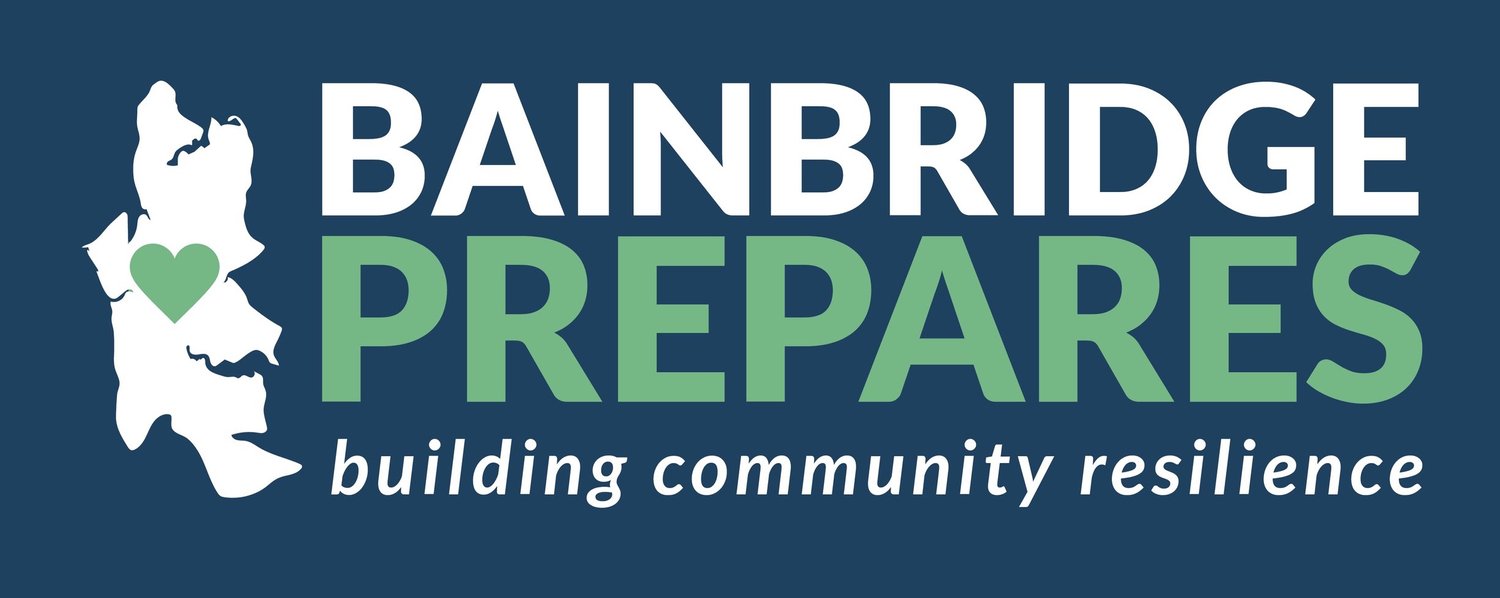Bainbridge Is Now Tsunami and Storm Ready
The National Weather Service (NWS) just awarded Bainbridge Island with its TsunamiReady® and StormReady® designations. The designations mean the City has followed NWS guidelines for enhancing public safety in face of the likelihood of a post-earthquake tsunami reaching the island’s shores or of storm surges that affect the coastline.
The guidelines require that local government be able to issue alerts to the community, develop a formal tsunami operations plan, engage in annual exercises, and conduct public outreach and education efforts (and that local schools also receive the training). The City has posted additional tsunami warning signs around the island including at Blakely Harbor Park, Lytle Beach, Fay Bainbridge Park, Manitou Beach, Fort Ward Park, Hawley Cove Park, Point Monroe, Pritchard Park, John Nelson Park, Rolling Bay Walk, Cannery Cove, and Waterfront Park.
Anne LeSage, The City’s Emergency Management Coordinator, explained that the City’s interest in the program started last July when the Washington Geological Survey and the Department of Natural Resources released a new tsunami model that showed Bainbridge at risk for a tsunami after even a 7.5 earthquake on the Seattle Fault. Such a tsunami could hit our shores within just minutes of the seismic event.
The City followed up by creating a set of maps that show risk by neighborhood and will now primarily be focusing on preparing the following neighborhoods:
West Port Madison
Point Monroe
Manitou Beach/Murden Cove
Rolling Bay Walk
Yeomalt Point
Wing Point/Hawley Cove
Eagle Harbor/Head of the Bay
LeSage said that the Bainbridge Prepares partnership will use the Map Your Neighborhood infrastructure to reach the at-risk neighborhoods already participating in MYN and will conduct additional outreach to the at-risk neighborhoods not yet participating.
Reid Wolcott, Warning Coordination Meteorologist for NWS in Seattle, said about Bainbridge that he was “throughly impressed with the preparation that Bainbridge has put into the effort to be both storm ready and tsunami ready, and it is very clear that this is a community that genuinely cares about each other and has done tremendous amounts of work to get their community prepared for all hazards, including tsunamis.”
If you get a tsunami alert on your phone, feel a strong earthquake (lasts more than 20 seconds, causes damage, or knocks people down), see a large approaching wave OR the water suddenly receding, notice a rapid rise in sea level, or witness a landslide into the Sound, you should immediately evacuate to higher ground.
Featured photo shows Anne LeSage with BP Executive Director Loren Bast, BP Program Director Tyler Heinemann, and NWS representatives.

